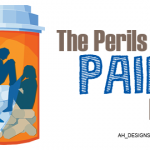
arloo / SHUTTERSTOCK.COM
SAN DIEGO—During a session at the ACR/ARHP 2017 Annual Meeting Nov. 3–8, three representatives from the federal government described several of the government’s varied national strategies and agencies that are tackling pain. All of these strategies are affected by the current national epidemic of opioid overdoses and the need for safer analgesic prescribing. But the government representatives also addressed the need for balancing the risks of analgesic prescribing with patients’ need to have their physicians manage their pain.
Asked whether the government viewed the issue primarily as an opioid problem or a pain problem, Linda Porter, PhD, director of the Office of Pain Policy in the National Institute of Neurological Disorders and Stroke in Bethesda, Md., responded, “We’ve tried to highlight this as a dual problem. You should see that pain management and treatment clearly are part of the government’s plan for the opioid crisis,” she said, although the epidemic of opioid overdose deaths must be urgently addressed.
“We recognize the cost of pain at the individual level and the societal level,” Dr. Porter said. “We have an opioid problem, and we have a pain problem, and we believe there’s a need to develop new pain therapies.” There are also pain modalities that could help but aren’t in use or covered, and we need more professional education to help medical trainees better understand chronic pain as well.
Dr. Porter cited the Institute of Medicine’s 2011 report, Relieving Pain in America, which first called for a coordinated, comprehensive national effort of public and private organizations to transform our understanding and treatment of pain. Data from the 2012 National Health Interview Survey (NHIS) show an estimated 25.3 million adults suffered pain every day for the preceding three months, and nearly 14 million adults experienced severe pain levels.1,2
The Office of the Assistant Secretary for Health at the Department of Health and Human Services (DHHS) helped drive the current National Pain Strategy, released March 18, 2016. “The National Pain Strategy is the government’s first broad-ranging effort to improve how pain is perceived, assessed and treated. It’s a significant step toward the ideal state of pain care,” said Vanila M. Singh, MD, MACM, chief medical officer in the Office of the Assistant Secretary in the DHHS in Washington, D.C. The National Pain Strategy is a coordinated plan for reducing the burden of chronic pain, which affects millions of Americans at significant economic cost.
At the same time, 2 million Americans today are addicted to opioids. In April 2017, Thomas E. Price, MD, Secretary of the DHHS, announced a five-pronged national strategy to combat the opioid crisis, including:
- Improving access to treatment and recovery services;
- Promoting the use of overdose-reducing drugs (such as naloxone);
- Strengthening our understanding of the epidemic through better public health surveillance;
- Supporting cutting-edge research on pain and addiction; and
- Advancing better practices for pain management.
The Pain Management Best Practices Inter-Agency Task Force is pulling together federal and nonfederal partners from a broad range of interests, including providers, pain advocacy groups, veterans’ services organizations, the Department of Defense and the Office of National Drug Control Policy. Its charge: Identify gaps in pain management best practices, recommend how to address them and disseminate information about those best practices. Nominations for the Inter-Agency Task Force were accepted through Sept. 27, and the DHHS is currently reviewing applications for the Task Force.
‘We have an opioid problem, & we have a pain problem, & we believe there’s a need to develop new pain therapies.’ —Dr. Porter
Research Priorities
Research into better, safer pain management and the fundamental understanding of pain remains an essential part of the pain puzzle. The 2017 Federal Pain Research Strategy was developed by the NIH Office of Pain Policy, with oversight by the Interagency Pain Research Coordinating Committee, a federal advisory committee created by the DHHS to enhance pain research efforts and promote collaboration across government agencies. This plan fulfills mandates in the Affordable Care Act while aiming to avoid duplication of federal pain research efforts. It has identified five research priority areas, as well as opportunities to apply Common Fund Support (a source of federal dollars in the Office of the Director at NIH) for transformative projects too big for one institute, Dr. Porter said.
The government’s research strategy also includes publications, public–private partnerships and research to address the opioid use disorder crisis. Delivery targets include enhancing the evidence base for pain care and integrating it into clinical practice. The Agency for Healthcare Research and Quality is driving a systematic review of evidence-based nonpharmacological pain treatments, from acupuncture to exercise, Dr. Singh noted. The government is also developing an online pain education portal and trying to standardize comprehensive pain assessments and outcome measures.
Charles (Chad) G. Helmick, MD, medical epidemiologist in the Arthritis Program at the Centers for Disease Control and Prevention, said a lot is going on in the pain arena at the federal level. It’s not just the opioid crisis, with increasing fatalities affecting all demographic groups, he said, but also recognition that the current pain management system is dysfunctional. Much of the pain experienced by Americans is musculoskeletal, either due to arthritis or low back pain.
“The National Pain Strategy Report was just the beginning. Now there are many federal pain-related activities to help address chronic pain,” Dr. Helmick said. Momentum is growing to better communicate this very complex issue while federal resources are diverted to pain. He urged participants to follow upcoming developments in the CDC’s Morbidity and Mortality Weekly Report (MMWR).
Finally, the government is also trying to add to pain knowledge by including four developmental objectives related to pain in Healthy People 2020 (a once-a-decade initiative promulgating broad objectives for the nation’s health) and inserting two pain questions into the National Health Interview Survey for 2016 and 2017.
Larry Beresford is a freelance medical journalist in Oakland, Calif.
References
- Institute of Medicine (US). Relieving pain in America: A blueprint for transforming prevention, care, education and research. Washington (DC); National Academies Press (US); 2011.
- Nahin RL. Estimates of pain prevalence and severity in adults: United States, 2012. J Pain. 2015 Aug;16(8):769–780.



